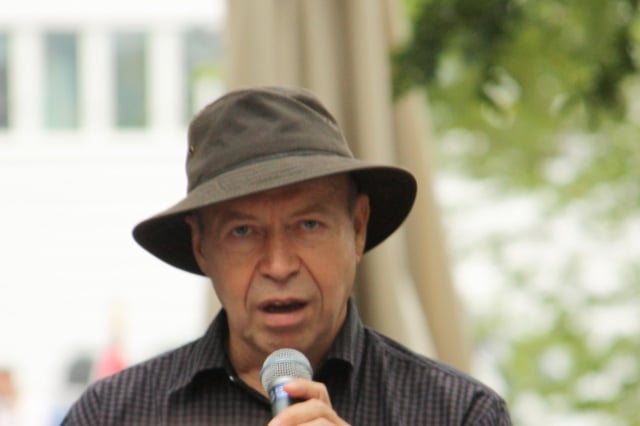The DeSmog UK epic history series continues with an account of how a NASA climate scientist was squeezed out of the White House environmental debate.
Just a week after the announcement came from George W. Bush that the US would renege on Kyoto, the then media-shy NASA climate scientist Jim Hansen (pictured) was invited to speak to Vice President Dick Cheney’s ‘Climate Task Force’.
Hansen took strength from the fact that the task force was manned by a high profile bunch: it was chaired by Cheney himself and included secretaries of state under orders to attend in person rather than send their delegates.
Complex Science
The NASA scientist did not expect to have any friends in the room; Bush’s chief of staff had previously attempted to fire Hanson in 1989 following the scientist alerting media to the fact that the White House had altered his conclusions on global warming – submitted to a hearing convened by the then US senator Al Gore – to make them seem less certain.
Nonetheless, it was too good of an opportunity to forfeit for the sake of pride or pessimism.
The first meeting fell on Hansen’s 60th birthday. Despite his lifetime of experience, the world’s foremost climate scientist was deeply anxious.
He and the other two scientists presenting were deeply apprehensive about the complexity of the work they had to present to this non-expert audience and spent the minutes before the meeting critiquing the more complicated aspects of their work.
Sceptic Lindzen
Afterwards, Hansen was pleased. He thought he had gained their attention and had been invited to come to the Task Force again.
But his optimism quickly died when he was escorted from the building. He was told that at the next meeting he would be joined by none other than tobacco lobbyist and dean of climate sceptics Richard Lindzen.
Lindzen, an MIT professor whose career had been made from talking to businessmen and politicians, maintained a cool and authoritative air in the White House. His presentations more closely resembled a lawyer fighting for his client and are anathema to the scientist, whose main aim is to fairly and accurately represent the facts.
But when it comes to communicating with beginners, the former method has the upper hand.
The ‘Right’ Perspective
Lindzen argued that the climate hegemony kept critical voices “out in the cold” and that the UN Intergovernmental Panel on Climate Change’s (IPCC) projections were no better than the Republican/sunspot analyses.
This was what they wanted to hear and, according to Hansen, the Bush–Cheney administration’s policies regarding CO2 appeared to be “based on or, at a minimum, congruent with, Lindzen’s perspective.”
It was three years before Hansen decided to give another public talk. He spent six months preparing to speak to the National Press Club in Washington. Here, he would explain why he planned to vote for Kerry rather than Bush.
But sponsors pulled the funding and, in the end, he delivered the speech to a college audience in Iowa City.
On 26 October 2004, Hansen told the audience: “In my more than three decades in government, I have never seen anything approaching the degree to which information flow from scientists to the public has been screened and controlled as it is now.”
Our next DeSmog UK epic history post will introduce one young geologist who joined the fight against climate deniers in an effort to support the IPCC’s findings.
Photo: Adam via Flickr
Subscribe to our newsletter
Stay up to date with DeSmog news and alerts







